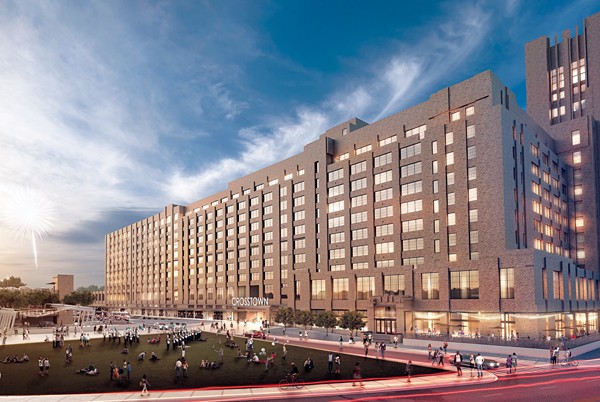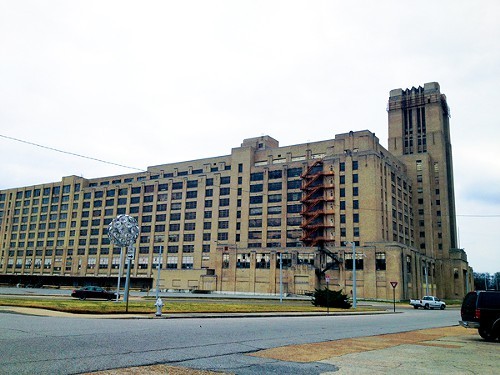For 17 years, the Sears Crosstown building has sat vacant, casting its gloomy shadow over the historic Midtown neighborhoods surrounding the 1.4-million-square-foot former Sears warehouse and retail store.
But on Saturday, February 21st, a community groundbreaking party will celebrate the construction that officially began on January 1st to transform the former Sears headquarters into a lively “vertical urban village” of medical offices, arts amenities, residential housing, and retail space.
And with a new focus for the building comes a new name. The partners in the Crosstown redevelopment project will be dropping Sears from the building’s name and announcing a new name at the groundbreaking party.

Artist rendering of the Crosstown redevelopment
“Everyone referred to the building as Sears Crosstown, but Sears is long gone,” said Todd Richardson, associate professor at the University of Memphis and co-leader of the redevelopment project. “We wanted the building to have its own identity and branding based on what’s going to be happening there.”
When Richardson and his partners started planning for the building’s redevelopment five years ago, the neighborhood around the building, which was called Crosstown in Sears’ heyday, had all but lost that identity.
“The name Crosstown had fallen off the map for most Memphians, and people didn’t even know where the neighborhood was,” Richardson said. “All of the events [put on by Crosstown Arts] — the lectures, the concerts, the MEMFeasts, the exhibitions — were a way to draw people back to the area and recognize its true potential.”
Since Crosstown Arts launched in 2010, Richardson said it has been successful in rebranding the neighborhood as Crosstown and rebuilding the community.
He says the block party, which will run from 11 a.m. to 2 p.m. in and around the triangle park between North Watkins and Cleveland, is intended as a way to thank the Crosstown community and the building’s founding partners and financial backers.
Besides the name-change announcement, the party will include an iron pour by the Metal Museum. They’ll be on-site melting down iron from old radiators taken out of the Crosstown building. Additionally, there will be live music, beer, and food trucks.
The founding partners — Church Health Center, Crosstown Arts, Gestalt Community Schools, Memphis Teacher Residency, Methodist Le Bonheur Healthcare, and ALSAC/St. Jude — are moving all or part of their offices into the building when it’s complete in early 2017.
A mix of 21 different funding sources, including public, private, and philanthropic, totaling more than $200 million have made the project possible.
“I don’t know if the general public knows that the financing is fully secured, and we are well on our way to having this building renovated and revitalized,” said McLean Wilson, principle of Kemmons Wilson, Inc. and co-leader of the Crosstown Development Project. “The ‘if’ question is no longer on the table.”
Since early January, about 300 construction workers have been on-site each day, many of them currently working on replacing the mortar between every brick in the building. Richardson said, when construction reaches its peak in about a year, there will be 900 to 1,000 workers on-site each day.
Once the building is complete, they expect 3,000 people — medical professionals, teachers, office workers, and residents — coming and going from the building daily. And those people will need places to eat and shop. Richardson said the development team is beginning to turn their attention to filling the retail spaces on the ground floor.
“We have about 60,000 square feet of retail left to lease. We envision a couple of restaurants, a coffee shop, maybe a small footprint grocer. We’ve got some pretty special retail space along the loading dock and what will be the main plaza,” Richardson said. “We’re excited to have the creative folks in Memphis come up with much better ideas than we could ever think of.”
